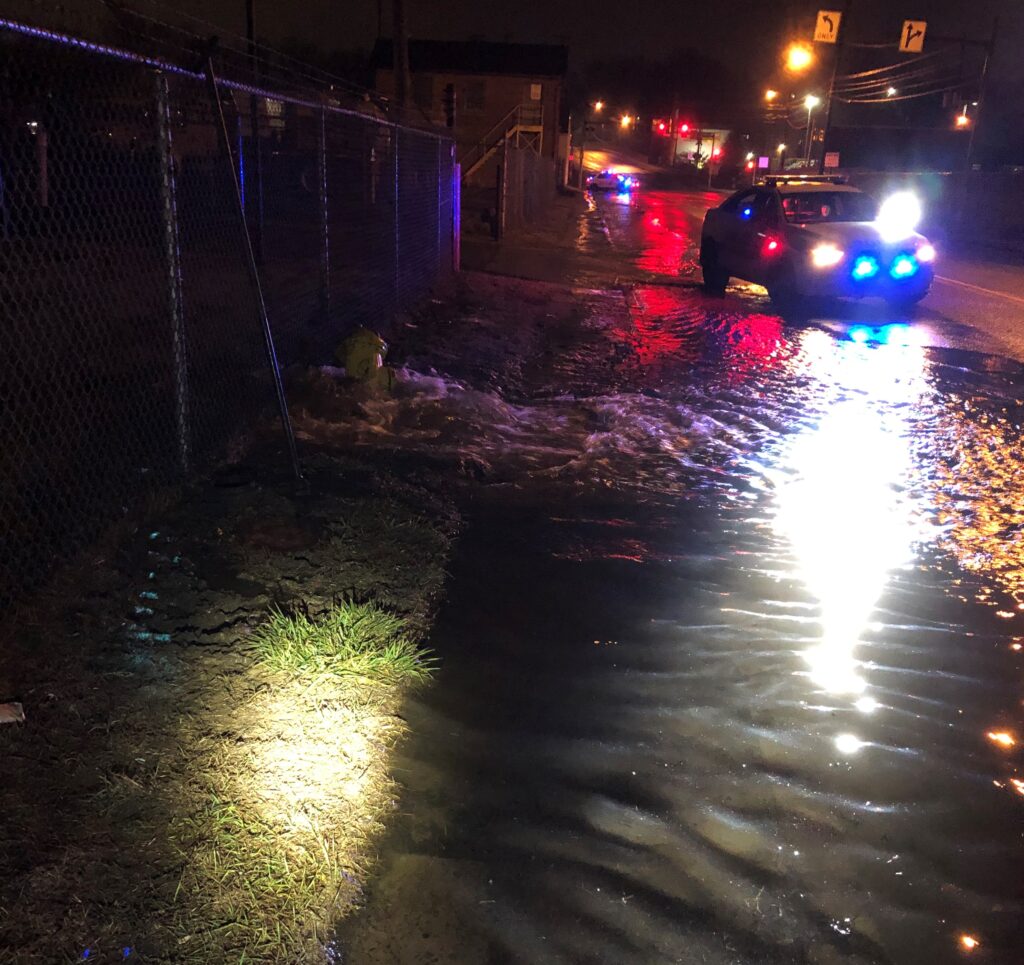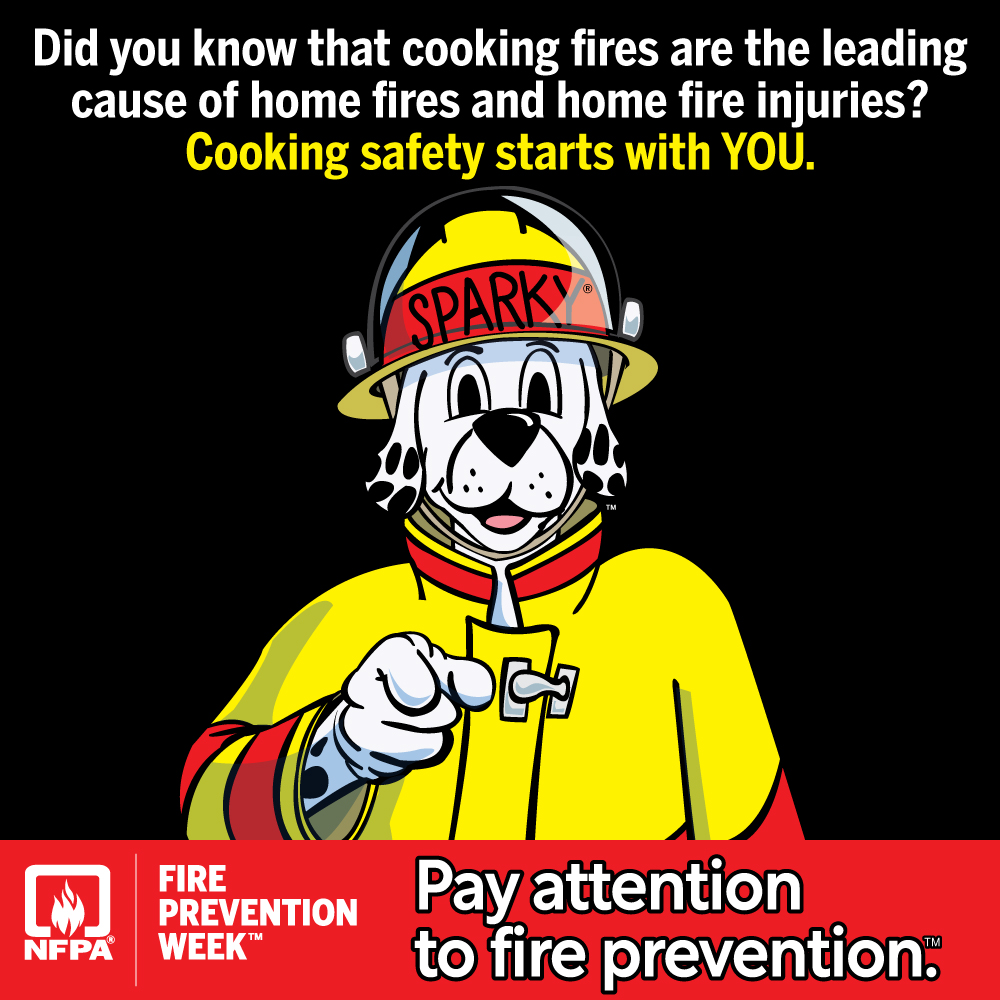For Fire Prevention Week, We’re Serving Up Some Safety Tips
 October 8, 2023
October 8, 2023October is fire prevention month, and this is fire prevention week (Oct. 8-14). That means it’s a great time to test all the smoke alarms in your home, check (or purchase) fire extinguishers, look for — and correct — fire hazards, and make it a habit to practice fire safety in the kitchen.
In 1922, the National Fire Protection Association (NFPA) declared the second week of October as Fire Prevention Week, to commemorate the Great Chicago Fire of 1871.

Speaking of fire safety, did you know LCA is responsible for more than 3,700 fire hydrants?
There are 1,907 hydrants in the City of Allentown, and 1,802 in our Suburban Division. Every summer we inspect, service, and paint hydrants to be sure they are working well and looking good. In the main picture, one of our workers tests hydrant pressure after a repair.
Our crews also respond to emergency repairs at all hours, such as when a hydrant is struck by a vehicle and floods the street—like the one in the accompanying picture.
This year, the National Fire Protection Association’s theme for fire prevention week is “Cooking safety starts with YOU. Pay attention to fire prevention.” According to the NFPA, cooking fires are the leading cause of home fires and home fire injuries. And unattended cooking is the leading cause of cooking fires and deaths.
The good news is you can prevent most cooking fires and burns with a few simple but effective safety tips:
- Never leave your stove unattended while cooking.
- Keep your cooking area free of flammable materials, such as oven mitts, towels, and food packaging.
- Create a kid-free zone of at least 3 feet around the stove.
- Turn pot handles toward the back of the stove so that kids can’t grab them, and you don’t accidentally bump them.
- Keep a kitchen-rated fire extinguisher nearby — it will carry a “K” rating on the side.
- Keep cooking equipment clean— toaster crumbs, greasy stoves, and grime buildup behind appliances are all fire hazards.
- Wear short, close-fitting, or tightly rolled sleeves to ensure your clothes do not touch a burner or open flame.
- Never pour hot grease in the trash (or down the drain!). Allow it to cool first, and then scrape it into the trash.
Here are a few home fire safety tips — borrowed from the American Red Cross and the NFPA — to keep you and your family safe this fire safety month, and every month:
- Make – and practice — a home fire escape plan. That means ensuring everyone knows at least two ways to escape every room of your home (consider escape ladders for sleeping areas on the second or third floor); designating a meeting spot that’s outside and out of harm’s way, and ensuring that everyone knows where it is. Then practice the escape plan during the day and at night — and make sure everyone practices low crawling and knows how to call 9-1-1. Do this at least twice a year.
- If a fire occurs in your home, GET OUT, STAY OUT and CALL for help.
- Identify and remove fire hazards. Sixty-five percent of home fire deaths occur in homes with no working smoke alarms. During a home fire, working smoke alarms and a fire escape plan that has been practiced regularly can save lives.
- Install smoke alarms on every level of your home, inside bedrooms and outside sleeping areas. Test them every month and replace the batteries at least once a year. Roughly two-thirds of home fire deaths happen in homes with no smoke alarms or no working smoke alarms, and about one in five smoke alarm failures was due to dead batteries. Working smoke alarms cut the risk of dying in reported home fires in half.
- Keep matches and lighters away from and out of reach of children.
- Heating equipment is the second leading cause of all reported home fires and home fire deaths. If you use solid-fuel heating equipment – wood stoves, fireplaces, coal stoves, etc. — make sure the chimneys are kept clean. And make sure to keep flammable materials clear of heating equipment.
For more fire safety tips, take a look at this downloadable Red Cross PDF. You can also download a fire safety coloring sheet, a kitchen appliance safety tips sheet, and a cooking safety sheet in English or Spanish.
